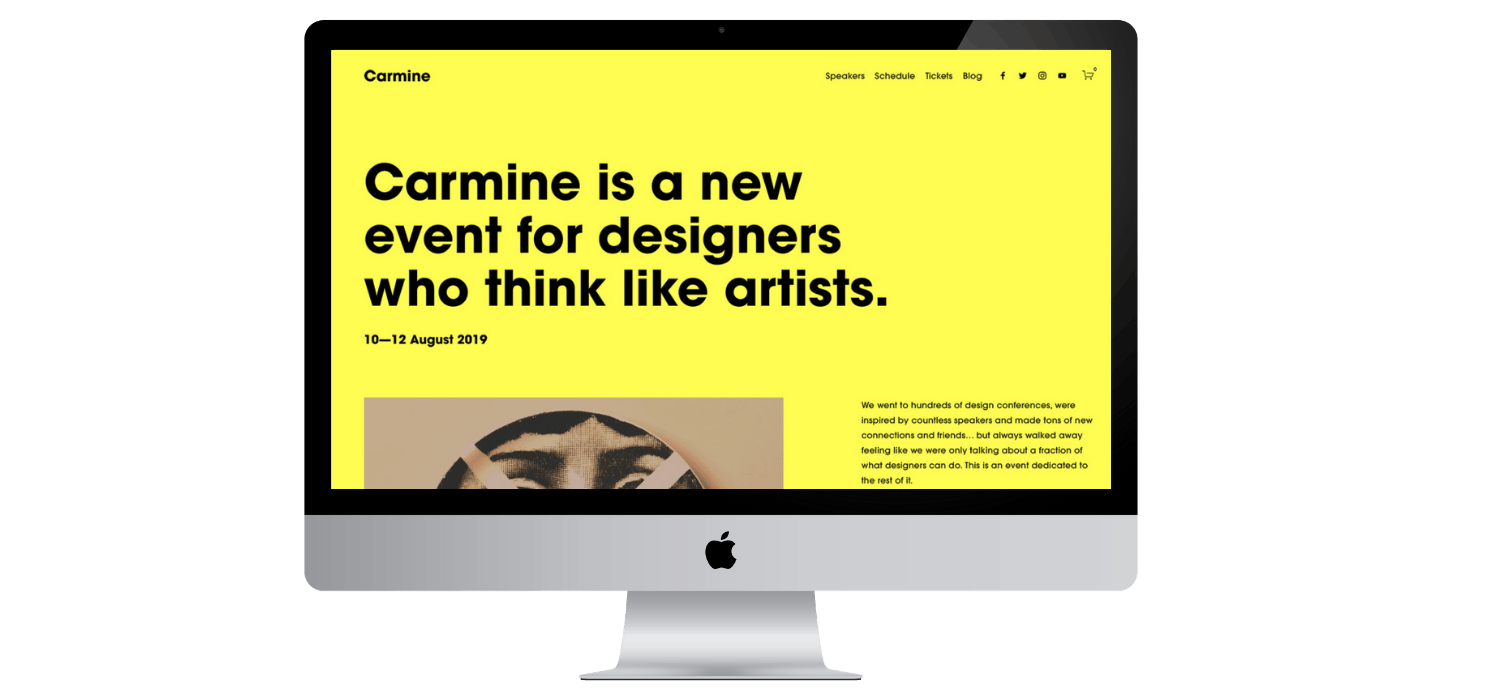How to create the perfect conference website
Just like an actual conference, a conference website needs to be robust and offer a great user experience.

Just like an actual conference, a conference website needs to be robust and offer a great user experience. It’s paramount to whittle down information into concise, easy-to-navigate chunks, and to make sure that the overall aesthetic and feel of the site feels slick, professional, and useful.
Thanks to the numerous website building platforms available today, all of this is more than possible – even for site-creating novices.
Let’s get started.
Outlining the core objectives of your conference website
Most conference websites share a similar set of objectives – the two main usually being to provide information and, naturally, to sell conference tickets. But it helps to think in a little more detail about this before you get started with creating your website. For example, you might find that growing brand awareness and credibility is going to be crucial for you if you’re a newcomer to your industry. In which case, putting extra attention into things like the tone of voice and overall aesthetic of your site is going to be key.
Some general points to consider here include:
- Will your site be your sole method of selling tickets, or do you have other avenues to go down for that?
- Are you creating your site to attract speakers, or is all of that stuff nailed down?
- Are you creating your site to supply content and resources, like downloadable PDFs – blogs and articles – or is it to solely be a hub of practical information about your conference?
If you don’t outline these details early on in the website-creating process, you might find yourself battling confusion and losing time later down the line.
Exploring conference-friendly design themes
A design theme is basically a pre-designed website template that you can customize to your needs – there’s a plethora of stunning, conference-friendly ones available on leading web platforms. Not all themes are available on all platforms though, which is why it can be helpful to explore what kind of design theme you want to go for before you move any further.
We have an article on website design inspiration that might be a useful starting point.
Defining the essential features of your website
Now you have an idea of the objectives of your site, and what you want its look and feel to be, it’s time to start thinking practically about the features the site is going to need. Some to consider include:
- Page or pages dedicated to speaker profiles
- A map showing the location of your conference
- A registration/ticket sales page
- A blog where you can host content, including articles, infographics and video content
- A place for submissions or applications from potential speakers
- An area to display organising committee details
- A scheduling/programming page
- An area to display sponsor details
- An area to showcase case studies of past conferences you’ve run
- Pages to provide ‘why attend’ information – a space to provide information about your mission, ethos and backstory, as well as the benefits to be gained from attending your conference
- A space for FAQs
Try to nail down as much of these at this point so that you’ve got a clear sense of direction when it comes to outlining the structure of your conference website.
Tip: When you use Ticket Tailor for online registration, you can embed your ticket box office page directly to your site – so your customers don’t have to leave the website to buy tickets.
Creating a wireframe and hierarchy of pages
Now it’s time to start thinking about the structure your website is going to take. It can help to go back to basics and (literally) put pen to paper for this stage. Try sketching out a hierarchy for your site, placing boxes for the top-level pages across the top of the page, and then moving downwards from each of these. For example:

If you’re feeling a bit stumped – try looking at competitor sites for inspiration.
Choosing a website platform
Now it’s time to choose a website platform bearing all of the planning you’ve done so far in mind. Some leading platforms to consider include:
Working with a copywriter
When it comes to crafting the content for your site, it might be tempting to muddle something together yourself. This is fine if you’re passionate about words and have experience writing for websites – but if not, it can really pay off to hire a pro in for the job. A copywriter will be able to hone your messaging, make sure your site communicates impactfully, effectively and concisely, and generally make sure things are consistent and professional throughout. If you don’t already have a defined tone of voice, they’ll be able to help you with that too.
In terms of briefing a copywriter, you’ll need to provide them with as much information as you can about your intentions for the site – including:
- Practical information about the content, style and format of your event
- More abstract information about your brand, mission and messaging
If you’re not used to the briefing process, it may help to show the copywriter examples of other work you like – for example, competitor websites, or even just the websites of brands that resonate with you. If they’re good at what they do, the copywriter should be able to ask you the right questions early on, so as to get a clear idea of what you're looking for.
Perfecting speaker bios
Most speakers will want to provide their own bios/write-ups, but before you ask them to do so, make sure you:
- Decide on a word limit so all bios are roughly the same length
- Decide on any must-haves so speakers provide the right information (like their education background)
When you get the bios through, it can be a good idea to get your copywriter to review and tweak them for consistency – you’ll just need to make sure you run the finished result by the speakers for approval before publishing.
Driving sales and improving user experience with clear call to actions
One of the most important elements on any site is the use of enticing call to actions. These are basically the signals that help users get from A to B. Call to actions should, naturally, include buttons for ticket registration, but they can also be used to improve user experience in general. For example, if a person has landed on a speaker bio, using a button to navigate them to the site’s program page can help them to find where that speaker sits in the greater scheme of the conference.
And there you have it – by following these steps you’ll be well equipped to create a great conference website that helps engage attendees, celebrate your mission and drive ticket sales. Good luck!
We sell ticket events of all shapes and sizes!
Don’t just take our word for it!
Capterra
G2
